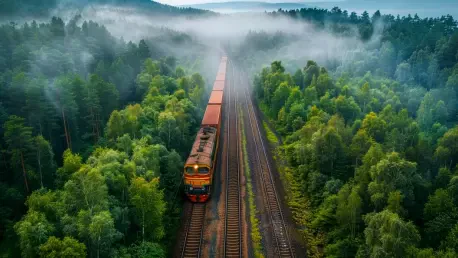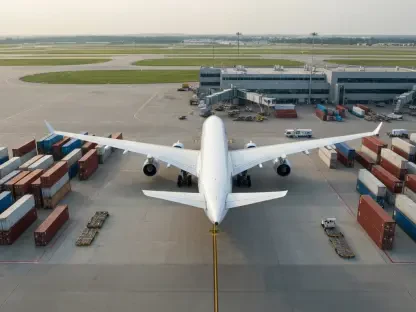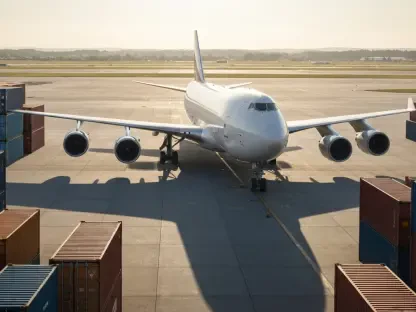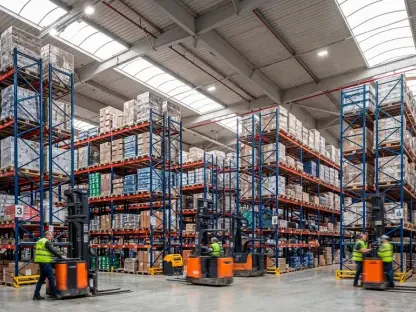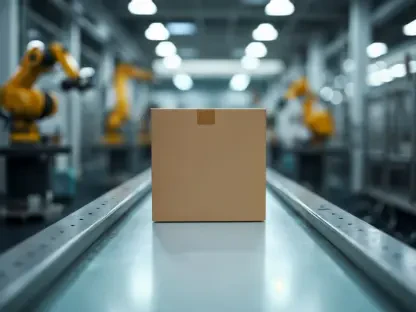Welcome to an insightful conversation with Rohit Laila, a veteran of the logistics industry with decades of experience in supply chain and delivery. Rohit’s passion for technology and innovation has positioned him as a thought leader in the rail sector, offering unique perspectives on the challenges and opportunities facing major players like CSX. In this interview, we dive into the current state of the rail industry, the impact of natural disasters, the importance of collaboration over mergers, the pressures of activist investors, and what sets a company like CSX apart in a competitive landscape. Let’s explore how these dynamics are shaping the future of rail logistics.
How would you describe the current environment in the rail industry, and what are some of the biggest challenges companies like CSX are navigating right now?
The rail industry is at a fascinating crossroads. On one hand, there’s immense potential for growth with increasing demand for efficient freight transport. On the other, companies like CSX are grappling with unpredictable disruptions—think natural disasters, aging infrastructure, and evolving customer expectations. The pressure to maintain operational efficiency while investing in modernization is real. For CSX specifically, events like Hurricane Helene have thrown a wrench into their operations, particularly on critical north-south routes. Beyond that, the industry as a whole is dealing with labor issues, regulatory scrutiny, and the need to balance profitability with sustainability goals. It’s a complex puzzle, but one that also opens doors for innovation.
Can you elaborate on how natural disasters, such as Hurricane Helene, affect rail operations, and what strategies might help mitigate these impacts?
Natural disasters like Hurricane Helene can be devastating for rail operations. They disrupt key routes, damage infrastructure, and delay shipments, which ripple through the supply chain. For CSX, having one of their major north-south corridors impacted means not just logistical headaches but also financial hits and frustrated customers. To manage this, railroads need robust contingency plans—things like rerouting traffic, pre-positioning repair crews, and leveraging technology for real-time tracking of issues. I’ve seen companies invest in predictive weather analytics to anticipate disruptions, which can make a huge difference. It’s also about building resilience into the network, like ensuring redundancy in critical corridors. These steps aren’t cheap, but they’re essential for maintaining trust and reliability.
There’s been a lot of emphasis on collaboration over consolidation in the rail sector. What does this approach mean for a company like CSX, and why is it a priority?
Collaboration over consolidation is about working smarter, not just getting bigger. For CSX, it means partnering with other railroads to tackle shared challenges, like improving interchanges where freight gets handed off between networks. These points are often bottlenecks—delays there can mess up schedules across multiple carriers. By focusing on collaboration, CSX can enhance efficiency without the regulatory headaches or cultural clashes that come with mergers. It’s a practical choice in an era where regulators are skeptical of big consolidations. Plus, it allows companies to pool resources for things like technology upgrades or infrastructure projects, which benefits everyone, including customers.
Speaking of mergers, there’s been speculation about potential combinations in the industry. What’s your perspective on whether mergers are the right path for rail companies right now?
Mergers in the rail industry are a double-edged sword. On paper, they promise economies of scale and streamlined operations, but in reality, they often bring integration nightmares, regulatory roadblocks, and customer dissatisfaction if service dips during the transition. For a company like CSX, focusing on optimizing their existing network makes more sense right now than chasing a mega-merger. The industry’s history shows that bigger isn’t always better—look at past consolidations that led to service disruptions. I think the focus should be on strategic partnerships and operational excellence. Mergers might have a place down the road, but only if they genuinely add value for shareholders and customers, not just for the sake of size.
Some rail companies have faced scrutiny from activist investors. How do you think this kind of external pressure impacts leadership and strategy in the industry?
Activist investors can be a wake-up call, but they can also be a distraction. When a company like CSX faces criticism from a group like Ancora Holdings, it puts leadership under a microscope. Sometimes, these investors highlight legitimate issues—inefficiencies or missed opportunities—that need addressing. But often, their tactics, including personal attacks or exaggerated claims, can derail focus from long-term strategy to short-term firefighting. It’s a balancing act for leaders to listen to valid critiques while not letting the noise dictate their vision. In my experience, the best response is transparency—communicate clearly with stakeholders about the company’s direction and results. That can neutralize some of the pressure and keep the team aligned on core goals.
When we talk about a company standing out in the rail industry, what factors do you think contribute to a strong position, like the one CSX claims to have?
A strong position in the rail industry comes down to a few key things: network strength, financial performance, and people. A robust network means having well-connected routes that can handle diverse freight and adapt to disruptions—that’s a huge competitive edge for serving customers reliably. Financially, achieving top-tier margins, as CSX has, shows they’re running a tight ship, balancing costs with revenue growth. But what often gets overlooked is the human element—high employee engagement translates to better service and fewer operational hiccups. When a company nails these areas, it’s not just surviving; it’s setting the pace for others. It’s about creating a system where every piece— infrastructure, finances, and workforce—works in sync to deliver value.
Looking ahead, what is your forecast for the future of the rail industry, especially in terms of balancing growth with challenges like disruptions and investor pressures?
I’m optimistic about the rail industry’s future, but it won’t be a smooth ride. Growth is on the horizon as more businesses recognize rail as a cost-effective, sustainable way to move goods, especially with the push to reduce carbon footprints. However, disruptions—whether from weather, labor disputes, or geopolitical shifts—will keep testing resilience. Investor pressures will also persist, pushing for quicker returns, which could clash with the long-term investments needed for infrastructure and tech. My forecast is that companies who double down on innovation—think automation, data analytics, and green tech—while fostering strong partnerships will lead the pack. It’s about staying agile and customer-focused. Rail has a critical role in the supply chain, and I believe the next few years will show just how vital it can be if these challenges are met head-on.
